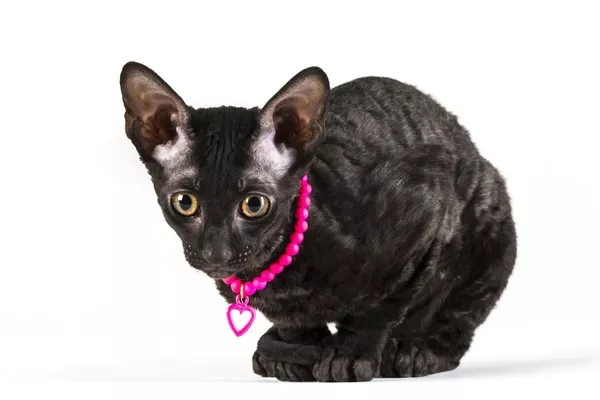The Cornish Rex is a unique and captivating breed of cat that stands out not only for its distinct appearance but also for its reputed hypoallergenic qualities. With their curly coats and slender, elegant bodies, Cornish Rex cats are a favorite among feline enthusiasts. One of the most common questions prospective cat owners ask about this breed is whether Cornish Rex cats are hypoallergenic. This article delves into the hypoallergenic characteristics of the Cornish Rex, exploring the science behind allergies, the specific traits of the breed, and practical advice for allergy sufferers considering a Cornish Rex as a pet.
Understanding Allergies to Cats
What Causes Cat Allergies?
Cat allergies are typically triggered by proteins found in the saliva, urine, and dander of cats. The primary allergen is a protein called Fel d 1, which is produced in the sebaceous glands of cats. When cats groom themselves, this protein is transferred to their fur and skin. As the fur and skin shed, the allergen becomes airborne and can cause allergic reactions in sensitive individuals. Symptoms of cat allergies include sneezing, runny or stuffy nose, itchy and watery eyes, coughing, wheezing, and skin rashes.
Prevalence of Cat Allergies
Cat allergies are common, affecting approximately 10% of the population. These allergies can range from mild to severe, impacting the quality of life for those who love cats but struggle with allergic reactions. This widespread prevalence underscores the importance of understanding hypoallergenic cat breeds and the science behind them.
What Does Hypoallergenic Mean?
Defining Hypoallergenic
The term “hypoallergenic” refers to something that is less likely to cause an allergic reaction. In the context of cats, a hypoallergenic breed would produce fewer allergens or have characteristics that reduce the likelihood of triggering allergies. It is important to note that no cat breed is completely allergen-free, but hypoallergenic breeds may cause fewer or milder symptoms in allergy sufferers.
Hypoallergenic Cats: Myth or Reality?
While the idea of a completely hypoallergenic cat is a myth, certain breeds, including the Cornish Rex, are considered more suitable for people with allergies. This is due to various factors such as the amount of shedding, the type of fur, and the grooming habits of the cat. Understanding these factors can help potential cat owners make informed decisions.
The Cornish Rex: A Unique Breed
History and Origin of the Cornish Rex
The Cornish Rex breed originated in Cornwall, England, in the 1950s. The breed’s distinct appearance is due to a natural genetic mutation that affects the hair structure. The first Cornish Rex cat, named Kallibunker, was born in a litter of farm cats. Kallibunker’s unusual coat of curly fur led to the development of the breed through selective breeding to maintain these unique characteristics.
Physical Characteristics
The Cornish Rex is known for its slender, athletic body, large ears, and oval-shaped eyes. However, the most striking feature of the Cornish Rex is its coat. Unlike most cats, which have three layers of fur (guard hairs, awn hairs, and down hairs), the Cornish Rex has only the down hair, which is soft and curly. This coat texture is one of the reasons why the Cornish Rex is often considered hypoallergenic.
Hypoallergenic Qualities of the Cornish Rex
Reduced Shedding
One of the main reasons the Cornish Rex is thought to be hypoallergenic is its reduced shedding. Cats that shed less hair and dander are less likely to spread allergens throughout the home. The Cornish Rex’s coat is short and close to the body, resulting in less hair being released into the environment. This can significantly reduce the amount of airborne allergens.
Saliva and Allergen Production
The Cornish Rex is not known to produce less Fel d 1 protein compared to other cats. However, their grooming habits and the structure of their fur may help contain the spread of this allergen. The tight, curly coat of the Cornish Rex can trap some of the allergens, preventing them from becoming airborne as easily as they might with other breeds.
Skin Oils and Grooming
The unique coat of the Cornish Rex requires regular grooming, which can help manage the spread of allergens. Regular bathing and brushing can reduce the accumulation of saliva and dander on the fur, minimizing the amount of allergen present. Additionally, the Cornish Rex produces less oily skin compared to some other breeds, which can also contribute to a reduction in allergen spread.
Scientific Studies and Evidence
Research on Hypoallergenic Breeds
Several studies have explored the relationship between cat breeds and allergen levels. While no breed is completely hypoallergenic, research indicates that certain breeds, including the Cornish Rex, may produce fewer allergens. A study published in the Journal of Allergy and Clinical Immunology found that individuals with cat allergies had fewer reactions to certain breeds, supporting the idea that some cats may be more suitable for allergy sufferers.
Cornish Rex and Allergen Levels
Specific research on the Cornish Rex suggests that while they do not produce significantly lower levels of Fel d 1, their unique coat and grooming habits can help manage allergen levels in the home. Anecdotal evidence from cat owners with allergies often supports these findings, with many reporting fewer symptoms when living with a Cornish Rex compared to other breeds.
Managing Allergies with a Cornish Rex
Allergy Testing and Consultation
Before bringing a Cornish Rex into your home, it is advisable to undergo allergy testing to confirm that you are allergic to cats and to determine the severity of your reaction. Consulting with an allergist can provide valuable insights and recommendations tailored to your specific situation. In some cases, allergists may perform a skin prick test or a blood test to measure your sensitivity to cat allergens.
Creating an Allergy-Friendly Home
To minimize allergic reactions, it is essential to create an environment that reduces allergen exposure. Here are some practical tips for maintaining an allergy-friendly home:
Regular Cleaning: Frequent vacuuming with a HEPA filter, dusting, and washing of bedding can help remove allergens from your home.
Air Purifiers: Using air purifiers with HEPA filters can capture airborne allergens and improve indoor air quality.
Cat-Free Zones: Designate certain areas of your home, such as the bedroom, as cat-free zones to reduce allergen exposure in those spaces.
Wash Hands: Always wash your hands after handling your cat to avoid transferring allergens to your face or other surfaces.
Furniture Covers: Use washable covers on furniture to make it easier to clean and reduce allergen buildup.
Grooming and Care
Regular grooming is essential for managing allergies with a Cornish Rex. Here are some grooming tips to consider:
Bathing: Bathing your Cornish Rex once a week can help remove allergens from the fur. Use a mild, cat-friendly shampoo to avoid skin irritation.
Brushing: Brush your cat regularly to remove loose hairs and dander. A fine-toothed comb or a grooming mitt designed for cats can be effective.
Diet and Health: Ensure your cat has a healthy diet and regular veterinary check-ups to maintain good skin and coat health, which can reduce dander production.
Personal Experiences and Anecdotes
Testimonials from Cornish Rex Owners
Many Cornish Rex owners with allergies have shared positive experiences living with this breed. For instance, Sarah, an allergy sufferer from New York, notes that her symptoms have significantly decreased since adopting a Cornish Rex. She credits regular grooming and maintaining a clean home for her improved health. Similarly, Mark, from California, found that his asthma symptoms were much milder with a Cornish Rex compared to other breeds he had owned in the past.
Challenges and Considerations
While many allergy sufferers find relief with a Cornish Rex, it is important to acknowledge that individual experiences can vary. Some people may still experience allergic reactions, albeit to a lesser degree. It is crucial to spend time with a Cornish Rex before making a commitment to ensure compatibility. Additionally, managing allergies requires ongoing effort and diligence in maintaining a clean environment and proper cat care.
Conclusion
The Cornish Rex is a remarkable breed with unique characteristics that may make it a better choice for allergy sufferers. While no cat is entirely hypoallergenic, the reduced shedding, unique coat, and grooming habits of the Cornish Rex can help minimize allergen exposure. Scientific research and anecdotal evidence suggest that many individuals with cat allergies experience fewer symptoms with a Cornish Rex. However, managing allergies involves a combination of strategies, including regular cleaning, grooming, and consultation with healthcare professionals.
For those who love cats but struggle with allergies, the Cornish Rex offers a potential solution. With proper care and precautions, it is possible to enjoy the companionship of this charming and affectionate breed while keeping allergic reactions at bay.
























